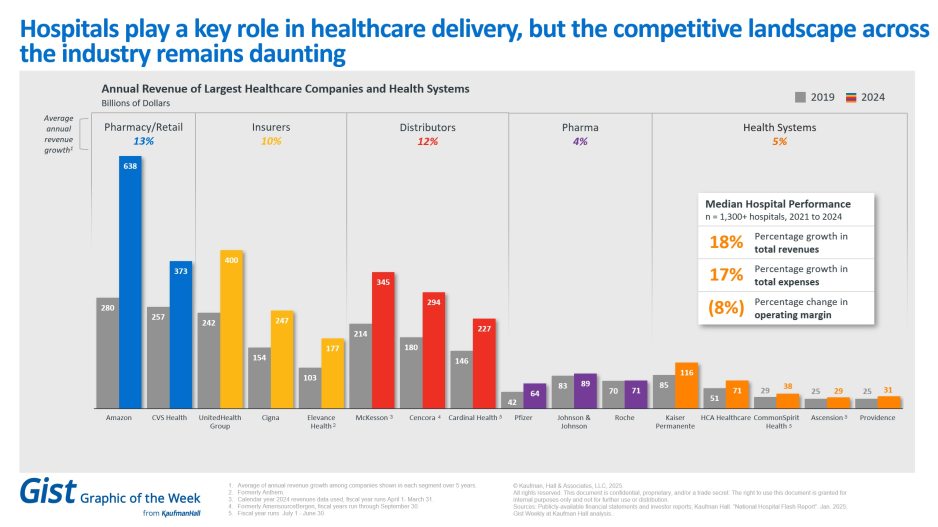Friday Report

From Washington, DC,
- Govexec tells us,
- “President Trump on Thursday issued a presidential memorandum aiming to expand the power of the Office of Personnel Management to fire federal employees, alarming experts and federal employee groups.
- “The memo, quietly published Thursday night alongside an executive order mandating agencies share data, particularly with Elon Musk’s Department of Government Efficiency, delegates to OPM the authority to fire federal employees based on “post-appointment conduct.”
- “A federal employee’s appointment occurs at the conclusion of their one-year probationary period, when their full civil service protections kick in. Prior to that point, the Office of Personnel Management has authority to determine whether a federal job applicant or new hire is “suitable” for federal employment, which generally refers to questions of their “character or conduct.”
- “But once an employee’s probationary period has ended, the authority to discipline or remove an employee rests solely with agency that employs them. Indeed, even if an employee threatens national security, only his or her employing agency may take action to suspend or remove them.
- “Trump’s memo expands who may remove employees for “conduct and character” reasons to include OPM and tasks the HR agency with writing the regulations governing the agency’s ostensibly new power. Agencies may make referrals to OPM for approval, or the OPM director may reach down and order individual agencies to discipline or fire workers.”
- Fierce Healthcare informs us,
- “Former Republican House Representative Michael Burgess, M.D., is a top choice for the White House’s second try at a Centers for Disease Control and Prevention (CDC) director nomination, according to a Reuters report citing three anonymous sources.
- “One of the sources described Burgess to Reuters as the likely nominee but said that the decision is not yet final. The administration has not yet commented on its next choice for the role.
- “Burgess, 74, practiced as an obstetrics and gynecology doctor before stepping into Capitol Hill in 2003. He chose not to seek reelection this past year.”
- Healthcare Finance offers more details on the terrorist threat against hospitals.
- On March 18, user @AXactual made a post on X with details related to the active planning of a coordinated, multi-city terrorist attack on United States health sector organizations, according to the joint threat bulletin.
- The terrorist attack on hospitals would reportedly be by ISIS-K, a division of the jihadist group Islamic State, according to The HIPAA Journal. The post was added to the X account of American Kinetix, which claims to be a Christian company in the United States that consists of JSOC (Joint Special OperationsCommand), the CIA and combat veterans, The HIPAA Journal said.
- American Kinetix said it had received reports of possible pre-attack surveillance at hospitals.” * * *
- “The primary targets would be mid-tier cities with low-security facilities, the joint threat bulletin said. With the information claiming multiple simultaneous targets, attackers would likely select health sector facilities with visibly weak security and conduct prior planning coordination.”
- The American Hospital Association (AHA) News lets us know,
- “The Drug Enforcement Administration and Department of Health and Human Services yesterday announced that the effective date for the final rule regarding telemedicine prescribing of buprenorphine will be further delayed from March 21 to Dec. 31. The original effective date was Feb. 18 before the first delay to March 21. As outlined in the Jan. 20 White House memorandum announcing the regulatory freeze, the agencies decided to delay the implementation of rules to review any questions of fact, law and policy.
- “The waiver provisions outlined in the third extension of telemedicine flexibilities for prescribing controlled substances will remain in effect to waive in-person visit requirements through Dec. 31.
- “Once implemented, the final rule for the telemedicine prescribing of buprenorphine will enable practitioners to prescribe a six-month initial supply of Schedule III-V medications to treat opioid use disorder via audio-only telemedicine interaction without a prior in-person evaluation.”
- STAT News points out,
- “The Food and Drug Administration cleared Alnylam Pharmaceuticals’ treatment for a progressive heart condition Thursday, setting it up to compete with therapies from BridgeBio and Pfizer.
- “Alnylam’s drug, vutrisiran, was approved for patients with transthyretin amyloid cardiomyopathy, or ATTR-CM, to reduce cardiovascular-related death and hospitalizations. This indication was widely expected among investors and is similar to the indications given for competing therapies.
- “The treatment, which will be sold under the brand name Amvuttra, was additionally approved to reduce urgent heart failure visits.”
- BioPharma Dive adds,
- “Alynlam Pharmaceuticals will sell its drug for a life-threatening heart disease at almost double the cost of other treatments available for the condition, company executives said Thursday.
- “The price of the drug, Amvuttra, was revealed on a Thursday evening conference call discussing the Food and Drug Administration’s decision to clear the treatment in people with transthyretin amyloidosis, or ATTR, cardiomyopathy. Alnylam already markets the medicine for people with a form of the condition that affects the nerves but has long looked to an approval in cardiomyopathy as the kind of revenue driver that can help it turn a consistent profit.
- Alnylam will begin selling Amvuttra as two other treatments, Pfizer’s tafamidis and BridgeBio Pharma’s Attruby, are already accessible. Both tafamidis and Attruby are taken orally, while Amvuttra is injected. Although none of the drugs have been tested directly against another and cross-trial comparisons come with caveats, Amvuttra’s benefits also don’t appear to be clearly superior to its rivals.
From the public health and medical research front,
- The Center for Disease Control and Prevention announced today,
- “Seasonal influenza activity remains elevated nationally but has decreased for five consecutive weeks. COVID-19 activity is declining nationally but elevated in some areas of the country. RSV activity is declining in most areas of the country.
- “COVID-19
- “COVID-19 activity is declining nationally but elevated in some areas of the country. Wastewater levels and emergency department visits are at low levels, and laboratory percent positivity is stable. Emergency department visits and hospitalizations are highest in older adults and emergency department visits are also elevated in young children.
- “There is still time to benefit from getting your recommended immunizations to reduce your risk of illness this season, especially severe illness and hospitalization.
- “CDC expects the 2024-2025 COVID-19 vaccine to work well for currently circulating variants. There are many effective tools to prevent spreading COVID-19 or becoming seriously ill.
- “Influenza
- “Seasonal influenza activity remains elevated nationally but has decreased for five consecutive weeks. Data to date suggest the season has peaked, however, flu-related medical visits, hospitalizations, and deaths remain elevated, and CDC expects several more weeks of flu activity.
- “Additional information about current influenza activity can be found at: Weekly U.S. Influenza Surveillance Report | CDC
- “RSV
- “RSV activity is declining in most areas of the country. Emergency department visits and hospitalizations are highest in children and hospitalizations are elevated among older adults in some areas.
- “Vaccination
- “Vaccination coverage with influenza and COVID-19 vaccines is low among U.S. adults and children. Vaccination coverage with RSV vaccines remains low among U.S. adults. Many children and adults lack protection from respiratory virus infections provided by vaccines.”
- The University of Minnesota CIDRAP reports,
- “The Texas Department of State Health Services (TDSHS) today reported 30 more cases in a measles outbreak in the western part of the state near the New Mexico border, as the New Mexico Department of health added 4 new cases to its total, pushing the outbreak total to 351.
- “Meanwhile, as global cases surge, a handful of states reported new cases in people who had connections to international travel. In a weekly update today, the Centers for Disease Control and Prevention (CDC) said it has received reports of 378 cases this year, well past the 285 cases reported for all of 2024.
- “The cases are from 18 jurisdictions, and 90% are linked to three outbreaks. The CDC’s update includes the first cases of the year from Kansas, Ohio, and Michigan. Kansas last week reported its first measles infection since 2018, and media reports say at least six cases have been reported in the southwest part of the state in Grant and Stevens counties.”
- The AP relates,
- “A common blood test may miss ovarian cancer in some Black and Native American patients, delaying their treatment, a new study finds. It’s the latest example of medical tests that contribute to health care disparities.
- “Researchers have been working to uncover these kinds of biases in medicine. Recently, the Trump administration’s crackdown on diversity, equity and inclusion has jeopardized such research as universities react to political pressure and federal agencies comb through grants looking for projects that violate the president’s orders.
- “Native American women have the highest rate of ovarian cancer. Black women with ovarian cancer have lower rates of survival compared to white women. Finding ovarian cancer early can lead to better chances of survival.
- ‘The new study, supported by grants from the National Cancer Institute and published Thursday in JAMA Network Open, looked at a test called CA-125. The test measures a tumor marker in the blood, and doctors use it to determine if a woman with a suspicious lump should be referred to a cancer specialist.”
- Per a National Cancer Institute news release,
- “When people who smoke are screened for lung cancer, studies have suggested that the screening visit can be an opportune time for health care providers to offer them ways to stop smoking.
- “Results from a large clinical trial now show that a comprehensive program that integrates intensive counseling and cessation medications may be a particularly effective way of accomplishing that goal.
- “The study included more than 600 adults who were current smokers. By the end of the 3-month treatment period, nearly 40% of those randomly assigned to participate in an intensive cessation program had quit smoking and had not started up again. In contrast, about 25% of those referred to a tobacco use quitline hit that same benchmark.
- “The results were published March 1 in JAMA Internal Medicine.
- “According to the study’s lead investigator, Paul Cinciripini, Ph.D., of the University of Texas MD Anderson Cancer Center, the findings confirm that when people who smoke are being screened for lung cancer, it “presents a critical opportunity” to support them in quitting. The type of support, however, appears to be particularly important, Dr. Cinciripini said.
- “Another important takeaway is “the importance of having [dedicated cessation specialists] be a part of [cessation] treatment,” said Carolyn Reyes-Guzman, Ph.D., of NCI’s Tobacco Control Research Branch, which funded the study.”
- Per Healio,
- “Risk for moderate to severe depressive symptoms during pregnancy varied widely across 20 different racial and ethnic groups, suggesting women from different cultural backgrounds view and report depression symptoms differently, data show.
- “Our study found differences among racial and ethnic subgroups in several aspects of prenatal depression, including the likelihood of receiving a diagnosis and reporting symptoms when screened in prenatal care,” Kendria Kelly-Taylor, PhD, a research fellow with Kaiser Permanente Northern California Division of Research, told Healio. “We found most of the [racial] groups were less likely to have a diagnosis of prenatal care and more likely to report moderate-to-severe depressive symptoms when screened. Previous research provides some possible reasons for these findings, which include differences in how patients in various racial and ethnic subgroups experience symptoms, view their symptoms, and their comfort in discussing them with a clinician or having a diagnosis in their medical record.”
- HealthDay reports,
- “The total injury death rate in the United States increased from 2013 through 2021, then declined through 2023, according to a March data brief published by the National Center for Health Statistics.
- “Sally C. Curtin, from the National Center for Health Statistics in Hyattsville, Maryland, presents trends in injury death rates overall and by three leading intents (unintentional, suicide, and homicide) for 2003 to 2023.
- “Curtin found that the total age-adjusted injury death rate increased 21 percent from 2013 to 2019 (58.8 to 71.2 per 100,000 standard U.S. population) after a period of stability from 2003 to 2013; there was an additional 25 percent increase through 2021 (89.0), followed by a 4 percent decline through 2023 (85.3). From 2003 to 2019, there was a threefold increase in unintentional drug overdose death rates, followed by a 58 percent increase through 2022 and a 4 percent decline through 2023. From 2006 to 2018, there was an increase in firearm-involved suicide death rates, followed by a decline in 2019 and an increase through 2021; rates remained stable through 2023. The firearm-involved homicide death rate declined from 2003 to 2014, then increased through 2021, and declined through 2023.”
From the U.S. healthcare business front,
- The Wall Street Journal reports,
- “Johnson & Johnson JNJ said it is increasing U.S investments to more than $55 billion over the next four years, boosting spending on manufacturing, R&D and technology in a move it says will create jobs and help speed up drug discovery and development.
- “The healthcare conglomerate said Friday that the investment represents a 25% increase from the previous four-year period.
- “Part of that will go toward four new manufacturing facilities in the U.S., and the expansion of existing sites, J&J said, adding that it is kick-starting the investment by breaking ground on a North Carolina biologics manufacturing facility on Friday.”
- Beckers Hospital Review notes,
- “East Ohio Regional Hospital, a 140-bed healthcare facility in Martins Ferry, has closed, local media outlets reported.
- “Signs posted at EORH entrances March 20 said “Hospital closed! Please go to the nearest hospital Trinity, Reynolds or Wheeling!” according to the outlets, including The Intelligencer and NBC and Fox affiliate WTOV.
- “The closing is the latest chapter for the struggling hospital and comes as workers reported having not received their most recent paychecks. Employees were not paid as scheduled March 7 and said they remained unpaid as of March 20, according to The Intelligencer.”
- Per Beckers Payer Issues,
- The healthcare industry needs to have more conversations about patient experience, AI and preventive care, according to payer executives.
- Becker’s connected with 25 leaders to learn more about what they say is underdiscussed in healthcare.
- The leaders’ observations can be found in the article.










